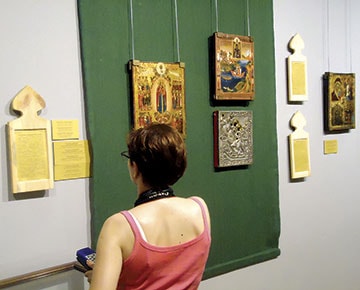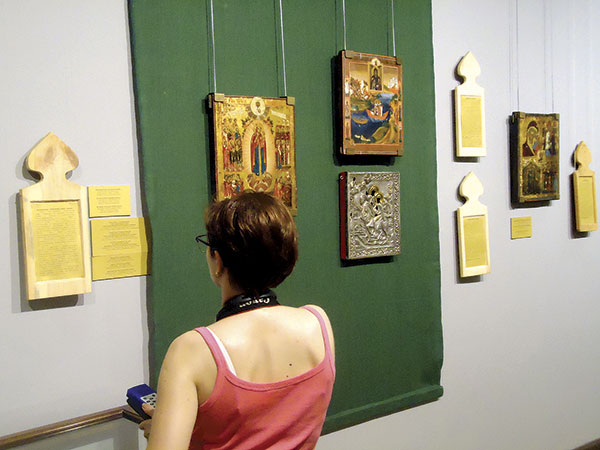
The exhibition presents 83 beautiful icons which would have once adorned the simple homes of Old Believers and those of Belarusian Orthodox faith. All from the Vetka area, the icons provide evidence of rural culture which no longer exists.
The icons were thought to offer protection, not only of the individual family but, patriotically, the wider settlement and country. For more than a millennium, from the Christianisation of Kievan Rus, icons embodied the accumulation of experience and Slavic spirituality.
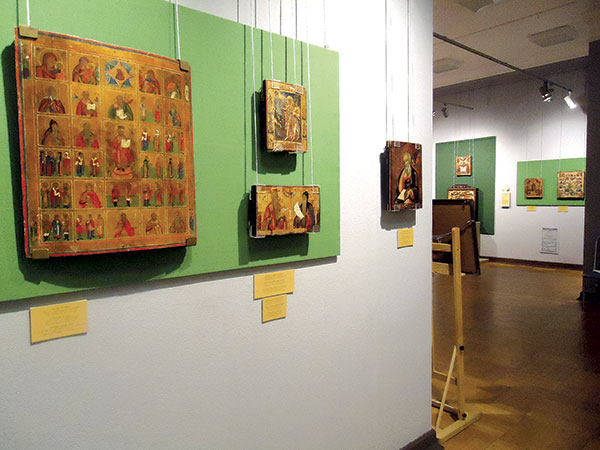
Soldiers going into battle would take a miniature icon with them, to act as protection. St. George was a popular choice, as was Nikita (a 14th century warrior) and Russian prince-brothers Boris and Gleb. Archangel Michael was perhaps the most popular of all. Each soldier would feel a personal bond with their own miraculous protector, who accompanied him in his ‘holy deeds’, overcoming malign forces. In the 12th-14th centuries, holy warriors helped forge the idea of national independence.
The icons on show are imbued deeply with the energy of rural culture. As well as helping achieve victory, each holy image carried a connection with the agricultural calendar, or protection from illness, robbers, wild animals, ‘evil spirits’ or ‘malicious curses’. St. George was connected with spring fertility land, eternally thrusting his sword into his dragon (as we see on various military medals. He watched over the spring pasture of cattle and the welfare of peasant boys. Of course, we all know the award of the Cross of Saint George. Meanwhile, Princes Boris and Gleb were connected with baking, absorbing negative energy and encouraging the bravery of sacrifice, while warning against the horror of fratricidal war.
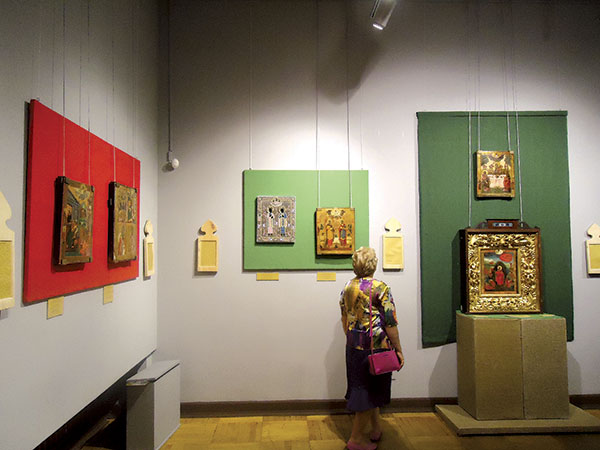
To which such icons did people pray in those simple rural homes? How did the force of a mother’s prayer, passionate to protect her son, husband or father, aid in returning them safely. How did this accumulate and transfer to the souls of those fighting: boys and young men? How did the image of the ideal soldier influence their behaviour? The military theme is universal, continuing to arouse interest. In 1995, the year of the 50th anniversary of the Victory over fascist Germany, saw much research published but work proceeds. The unique data collected from Vetka residents (a small city in the Gomel Region) adds to our understanding of the faith of Orthodox Believers and Old Believers.
Yelena Karpenko, who heads Ancient Belarusian Art at the National Art Museum and is the exhibition curator, tells us, “Folklore texts have clarified and revived the situation, bringing together voices from separate traditions. Our collections of Old Believer and Belarusian Orthodox icons demonstrate the local features of our culture.”
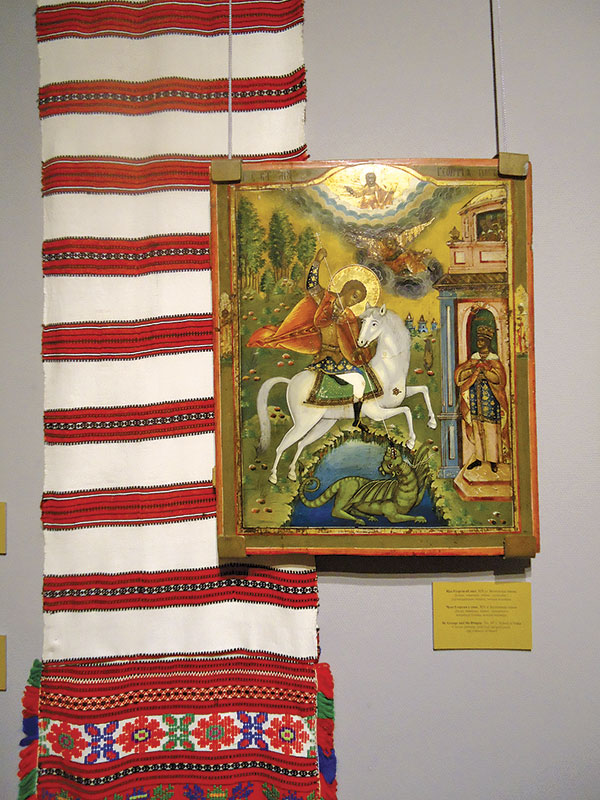
The works on show, many of which have been restored by museum experts, reveal several stylistic directions. Some still bear the ‘wounds’ of war: tears from shell splinters, for instance, purposefully left. The project is accompanied by albums entitled Vetka Icons, Voices of Lost Villages, and Living Belief — Vetka. Joint exhibitions have been organised in the cities of Mogilev, Minsk and Vitebsk, with the first entitled Saint George, launched with the Gomel Regional Museum of Local History, in 1995. Each has highlighted new aspects of military culture and of our spiritual heritage, attracting differing materials in each district: ‘heavenly rows’ of military images, ‘terrestrial’ exhibits and military equipment.
The current exhibition at the National Art Museum explores various dimensions of the theme, heavenly and terrestrial, and the opposition of war and peace. Military conflict has the power to plunge us into contemplation of the spiritual, resounding in space and time and revealing the eternal. The stability of our culture relies upon our faith: in God and in humanity.
A simple soldier, called Ivan, sent letters home from the Front, to his wife and mother. There, in their old house, they prayed to John the Warrior ‘for Ivan to return home alive’.
By Veniamin Mikheev









